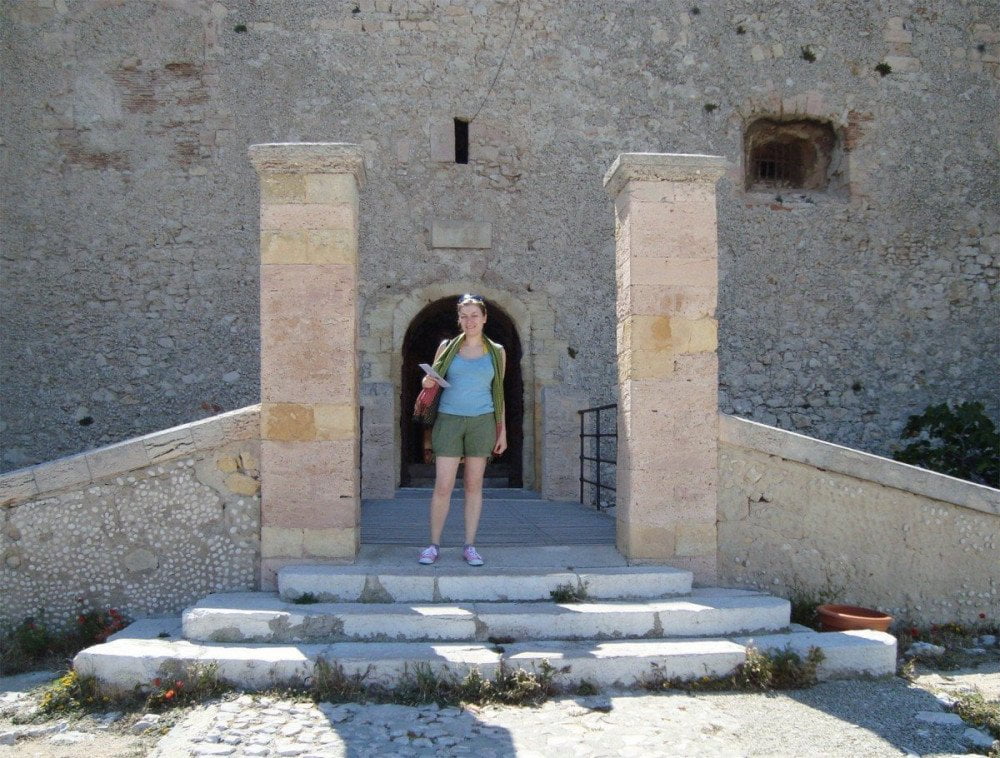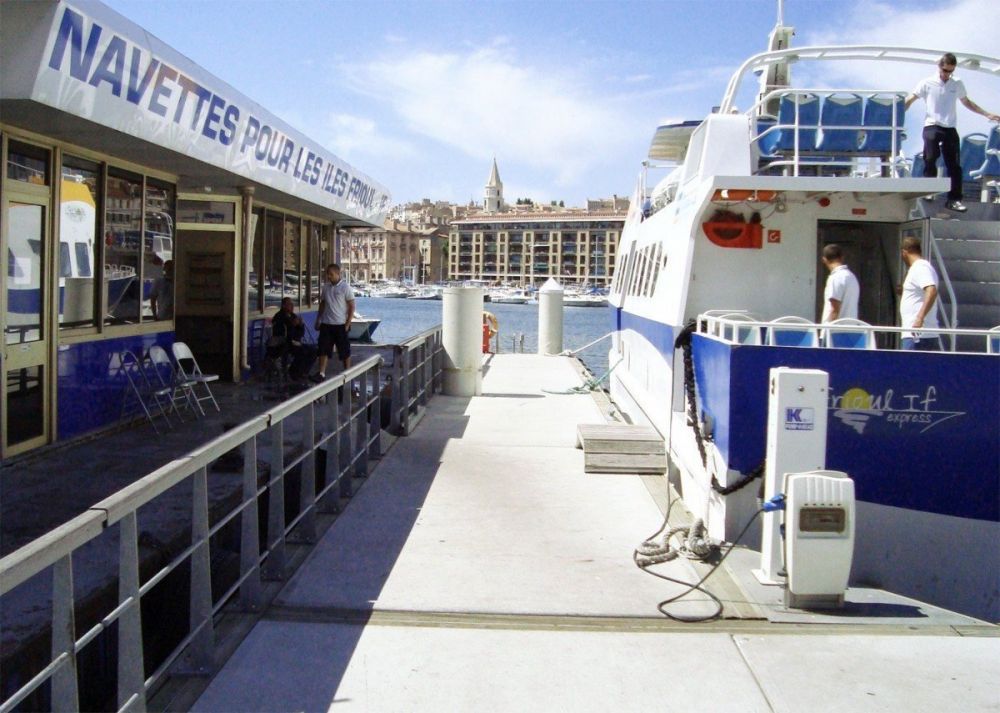Nestled in the azure waters of the Mediterranean, Chateau d’If stands as an iconic fortress, guarding the entrance to Marseille. Know as the French Alcatraz, the Chateau d’If is a formidable island fortress famous for witnessing centuries of maritime tales and political intrigue and the fictionary escape of Edmond Dantès, also known as the Count of Monte Cristo.
Table of Contents
About the Chateau d’If
Contrasting with the lively city of Marseille, the If island, part of the Frioul archipelago, exudes tranquillity interrupted only by the occasional call of seagulls. The Chateau d’If, constructed in the mid-16th century for coastal defence, stands remarkably untouched.
Though never besieged, the fortress served as a notorious prison, hosting French criminals, from murderers to political prisoners, mainly Protestants and Republicans. Today a popular tourist destination, the Chateau d’If has an eerie effect on visitors, making them feel the ancient island prisoners.
Chateau d’If: a fearsome French prison
The Chateau d’If housed prisoners from the beginning but only became a prison in the 19th century. There were two types of cells: dark and crowded cells on the ground floor for poor prisoners and sea-view cells on the first floor with a fireplace for wealthier prisoners who could afford rent.
It is unclear how Edmond Dantès survived in the poor cells, even in his literary fiction. They were so unhealthy that life expectancy was less than a year. During your visit, you can experience the harshness of the paupers’ cells.
The prison was converted into a museum in the early 20th century, allowing the public to visit. You can see a trace of the inmates’ presence from the graffiti on the walls. One of the cells in the museum has been dedicated to the fictitious inmate Edmond Dantès, referencing the book The Count of Monte Cristo. The book made the island famous worldwide.

Famous inmates in the history of Chateau d’If
Although the Chateau d’If was only converted into a prison in the 19th century, the fort was used for this purpose as early as the middle of the 16th century. It welcomed more or less illustrious guests for over three centuries. The first inmates of the Château d’If were two fishermen from Marseilles in 1540. The last were some prisoners of the 1914 civil war in Alsace and Lorraine.
Many inmates were political prisoners. In particular, the Chateau d’If housed many Huguenots who had been arrested and imprisoned following the revocation of the Edict of Nantes in 1685 by Louis XIV. The Edict of Nantes had guaranteed religious freedom in France, but its revocation had effectively turned all Protestants into criminals.
Famous prisoners
The most famous prisoners of the Chateau d’If were:
- Jean-Baptiste Chataud, commander of the ship Grand-Saint-Antoine, was imprisoned for three years. He was held responsible for bringing the plague to Marseilles in 1720. Instead of quarantining on the island of Jarre, Jean-Baptiste docked in the city and declared to the health office that the deaths on board were due to ‘de mauvais aliments‘, bad food. In the meantime, his sailors had started unloading goods, thus spreading the plague in the city.
- Honoré Gabriel Riqueti, Count of Mirabeau, was imprisoned in 1774 for almost a year at the behest of his father, who did not appreciate his dissolute behaviour. However, thanks to his financial means, he had a cell with a sea view and adequate nourishment.
- Françoise Elisabeth ‘Fanny’ Dillon, wife of General Henri Gatien Bertrand, a loyalist of Napoleon. Locked up in the Château d’If in March 1815, little is known about her. She appears to have been a brilliant and charming woman.
- Louise Auguste Blanqui, a republican socialist revolutionary who advocated ‘subversive’ ideas such as gender equality, the elimination of child labour and universal suffrage with one vote per person.
- The remains of General Jean-Baptiste Kléber, Napoleon’s popular general during the Egyptian campaign. His body was moved from the original burial site to the Isle of If, to prevent it from becoming a place of pilgrimage for republicans.
Fictionary prisoners
The most famous prisoners of the Chateau d’If in literary fiction come from the book The Count of Monte Cristo. They are Edmond Dantès, the unjustly imprisoned protagonist of the novel, and the Abbot Faria, his mentor and cell neighbour.
Animal inmates
The Chateau d’If housed a rhinoceros, a gift from an Indian king to the king of Portugal, then sent as a gift to Pope Leo X. The rhinoceros travelled by ship to Rome. It was displayed in a cell in the Chateau d’If during a stopover in Marseille.
During its stay on the island, the rhinoceros was seen by many onlookers, including the King of France. Eventually it arrived in Rome stuffed. It is not known for sure what happened; he may have died of cold in his cell or on the ship.
What to see at the Chateau d’If
The Chateau d’If prison is on a barren islet surrounded by silence and sea, which can take away any hope of returning free to the mainland. Walking through the courtyard feels strange, as it conveys the feeling of helplessness that the inmates had to experience. The Chateau d’If earned the nickname of the French Alcatraz because, during the three centuries in which it was a prison, no prisoner ever managed to escape.
The prison cells for ordinary prisoners are on the ground floor and windowless. The prisoners lived in questionable hygienic conditions with a life expectancy of less than a year. Reflecting on the terrible treatment of prisoners in past centuries is inevitable when looking at these small, dark spaces. Political prisoners, imprisoned for reasons that wouldn’t be crimes today, constituted the majority of the inmate population.
Rich and noble prisoners occupied the first floor of the Chateau d’If. The prisoners paid a monthly fee, like rent, to stay in these cells. Many famous people imprisoned at the Chateau d’If survived thanks to the different treatments and eventually returned to their usual occupations.
The graffiti of the Chateau d’If
The graffiti left by prisoners at Chateau d’If tells a story parallel to the official one. Along with simple graffiti displaying the prisoner’s surname and date, there are also more elaborate ones left by political prisoners. These depict key moments in French history.
After the riots of 1848, the prison housed over two hundred people who collectively created graffiti in the courtyard. Their choral work tells of the political prisoners’ unwavering faith in the political and social struggle. This message of hope to future generations also inspired the subsequent choral graffiti of 1871, created by the Communards awaiting trial.
It’s worth noting that at Chateau d’If, tourists have been leaving graffiti since the late 19th century in an attempt to follow in the footsteps of the Count of Monte Cristo. Interestingly, leaving graffiti as a tourist isn’t a new phenomenon and dates back to the first opening to the public. Nowadays, these graffiti are considered a part of the visit, including the ones left by soldiers who once served there.
Practical information for visiting the Chateau d’If
You can organise a visit to the Chateau d’If from Marseille by taking one of the sea shuttles. They offer regular passenger service from the Vieux Port of Marseille to the Frioul archipelago several times daily.
I recommend checking the castle’s timetable and weather conditions in advance. The departure of the ferries could change in the event of bad weather, and you couldn’t be able to spend at least a couple of hours you need to the visit the Chateau d’If.
Navette marittime Frioul If Express (Frioul If Express maritime shuttles)
Quai des Belges
13001 Marseille
In addition to the Frioul If Express, the Croisières Marseille Calanques and Icard Maritime companies should also provide regular service. Check for changes and ferry companies directly at the Vieux Port of Marseille.

To skip the queue at the ticket office, I recommend buying tickets for the Château d’If in advance instead of directly on the island. I had done the ticket on the spot without too much of a queue, but it was a weekday, and I had probably been fortunate. Other travellers confirmed that you could wait a long time at the weekend, so it’s better not to risk it.
Chateau d’If (postal address)
8, rue Glandeves
13001 Marseille
Before returning to Marseille, I recommend stopping on the other small islands in the Frioul archipelago. If the weather is good, take the chance to swim in their transparent waters; it’s a truly memorable experience. Feel free to comment if you already know the Chateau d’If or if this article made you want to visit it.
